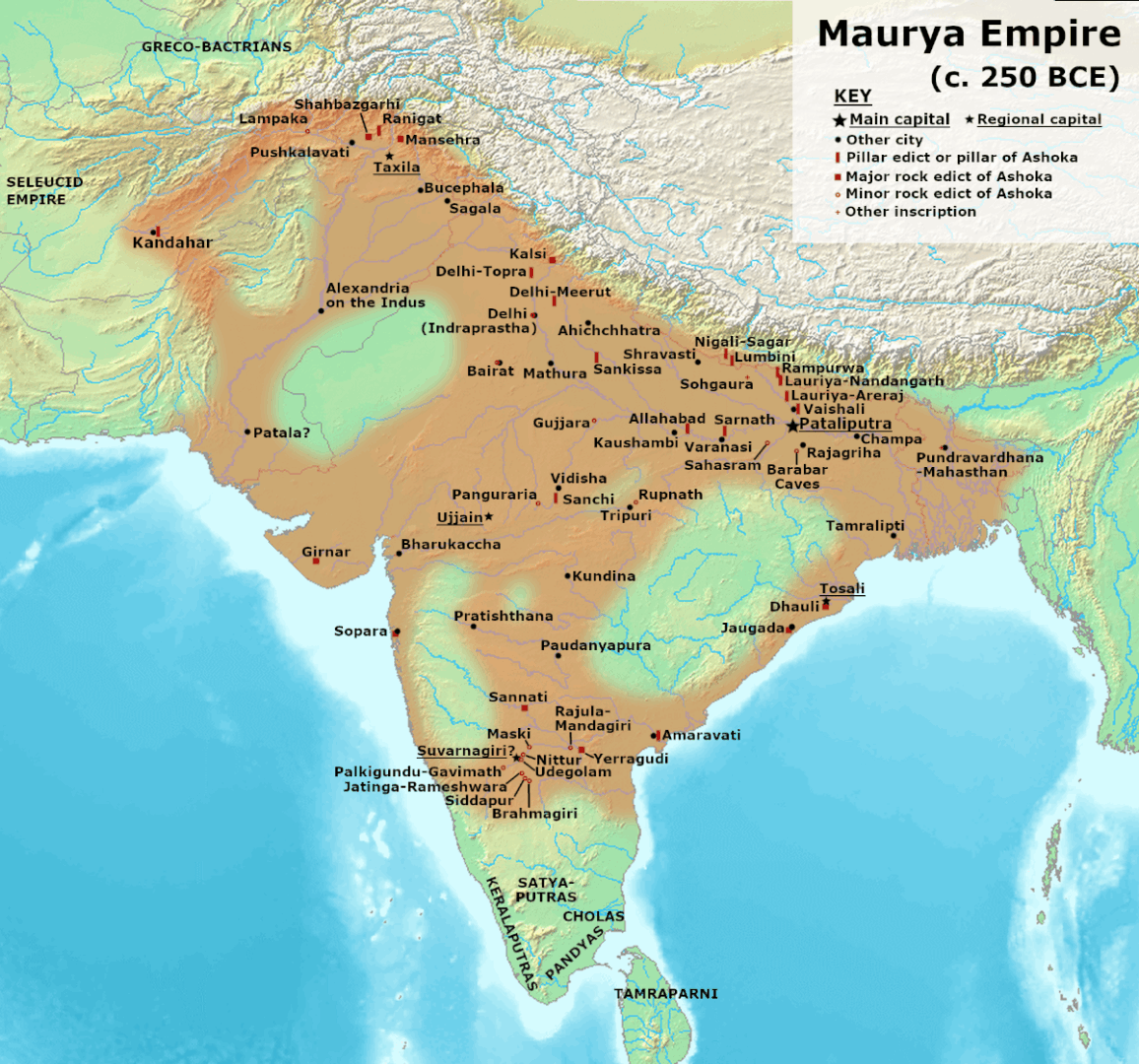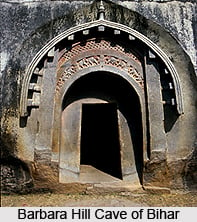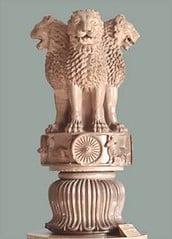Path to the Throne
Ashoka was the grandson of Chandragupta Maurya, the founder of the Mauryan empire, and the son of Bindusara Maurya. Bindusara himself was known as Amitrochates or the Destroyer of Foes. To analyze the impact of his actions, one must know about the Maurya Empire and the family from which he came.
Ashoka was born to Subhadrangi, also known as Dharma, a Hindu lady of Brahmin patronage, who served as a consort within the court of the Mauryan Empire in the 3rd century BCE. He had around 99 half-brothers, all of which he slaughtered in a four-year-long war for succession to the throne.

A bloodthirsty and brutal conqueror, Ashoka took over the throne of the Mauryan dynasty by force in his early thirties. The exact year is under some dispute, but many scholars agree on the year 268 BC. It is said that Ashoka expanded the Mauryan Empire all the way from Afghanistan to Bangladesh. He controlled more of the subcontinent than that which would be colonized by the Britishers one day.
As an emperor, he was great. As an individual, he was the paragon of discipline and strength. He was a skilled fighter and a sharp strategist which helped him curry the favor of his late father’s ministers. He was officially crowned the Mauryan emperor in 269 BC, ruling with an iron fist.
Mauryan Empire
The Maurya or Mauryan Empire reigned from 321 BCE to 185 BCE, and it is considered one of the most important dynasties of the Indian subcontinent. At its peak, it spanned across Northern and Eastern Asia encompassing present-day Pakistan, India, Bangladesh, Afghanistan, and even a small chunk of Iran. A fact left unknown to most of the global population is that the famous philosopher Chanakya, who has been made famous for his bloodthirsty foreign policy mindset, was the chief advisor to Chandragupta.
Chanakya Kautilya authored a book known as the Arthashastra which explains his standpoints on various ways to run an empire. The majority of the population was either Hindu, Buddhist, or Jain, and all three religions and their origins stem from Pan-India.
Art, architecture, and territorial expansion are the three major milestones that the Mauryan Empire achieved. The first two gained the empire massive praise due to the grandeur and levels of difficulty that accompanied it. Stonework is a time-consuming process that requires skilled individuals. The castles, monuments, and walls often had intricate designs made painstakingly by the workers.

The people worked either in the agricultural sector or within the trade industry. There wasn’t as defined of a government as it exists today, but the King ruled over all fairly and exercised direct control over the judiciary and armies, while other departmental control was delegated to lower ministers.
The economy was flourishing as it was owned by both the state and the masses and their trade – both domestic and with neighboring regions was done through one currency – Pana. The empire was already blooming but under Ashoka’s guidance, it achieved unprecedented heights.
The Kalinga War
Fought from 262 BC-261 BC, the war of Kalinga was a battle for the expansion of the Mauryan Empire which had devastating casualties. Thousands of men were slaughtered, families deported, animals killed, and land ruined.
The war of Kalinga left Ashoka flustered and adrift. His conquest of Kalinga did not taste as sweet when drowned in the blood of men, surrounded by the wails of wives, and cries of orphans. His philosophy of life took an abrupt turn as he decided to lay down his sword. Ashoka then converted to Buddhism as a way out of the darkness.
The Edicts of Ashoka the Great: Promoting Buddhism
Edicts refer to decrees or commands by those in authority positions. They can be declarations or statements, and in the case of Ashoka, they were engraved messages and inscriptions on stones, spread across Pakistan, India, Bangladesh, and Nepal. They are also known as the pillars of Ashoka.

Written in several languages including Sanskrit, Aramaic, and Greek, they promoted inter-faith harmony and the significance of Buddhism for a peaceful society. There are five broad categories within which these edicts are often translated into.
The Fourteen Rock Edicts
King Ashoka viewed the killing of animals for sustenance to be a violent act and something without which man could survive easily. His ban extended to his diet as well. There were to be no animals slaughtered in the royal kitchens and he turned vegetarian. Ashoka made sure there were herbs and materials available for medical treatment for both humans and animals.
Ashoka promoted interpersonal and familial respect and love through his edicts. He emphasized the importance of doing good even though it is much easier to fall prey to evil and laziness. Ashoka brought upon himself accountability and promised to be available to his subjects at all times, no matter what was occupying his time and company.
He banned hunting and useless festivals such as those that take place before weddings and do not offer any benefit to the people or environment. Ashoka placed significant focus on peace between households of various religions to eliminate any chances of budding hostility.
The Kalinga Rock Edicts
The edicts mentioned Ashoka’s averseness towards acts of dishonesty such as corruption within the judicial system, and he asked all his people to be fair and just in all their dealings. Even in such an era, Ashoka talked about the pitfalls of structural violence and how it can and should be avoided.
Through the Kalinga edicts, Ashoka confirmed to his neighbors that he no longer had any expansionist urges and wished to assuage their fears of the Mauryan Empire. He wanted these edicts to be read and remembered every four months.
The Minor Rock Edicts
Ashoka asked the common man to love and respect his parents, for they raised and loved us. He also included the important role of teachers in his declarations and requested people honor them. Ashoka also wanted monks and priests to brush up on their Dhamma texts often so that they did not forget or fall prey to ignorance and misinformation.
The Seven Pillar Edicts
Ashoka had these decrees inscribed after more than two decades had passed since his crowning. He said that his love and duty towards Dhamma had only increased over time and that this was to be an encouragement for all people, soldiers, workers, and officers to move towards Dhamma and attain their own happiness. He actively spread Buddhism and the teachings of Buddha.
Ashoka also clarified what constituted Dhamma; it included generosity, gratitude, humbleness, a lot of good, and a little bad. He had this edict written to serve as a reminder to people of how Dhamma surrounds them and is never too far or difficult to achieve.
Ashoka said that people often tend to overlook their bad deeds and instead just focus on the good, which should not be the case. The causes and violence that lead to bad deeds should be avoided. He had trees planted so that their shade would be of use to both man and beast. He also had makeshift hospitals built and watering holes dug.
The Minor Pillar Edicts
These edicts depict the scene of Ashoka visiting the village of Lumbini to pray there as it was the birthplace of Buddha. He also exempted the small community from paying taxes to the vast empire. In the history of India, Ashoka was the first emperor to bring several religious reforms with the main theme being to eliminate violence at all costs.
Ashoka is one of the greatest rulers that this world has ever seen, both in terms of his massive empire and his humility and service to mankind.
If you want to submit your articles and/or research papers, please check the Submissions page.
The views and opinions expressed in this article/paper are the author’s own and do not necessarily reflect the editorial position of Paradigm Shift.
Hafsa Ammar is a graduate of the National Defence University, Islamabad. Her areas of expertise are narrative building and propaganda warfare, centered around the Soviet Union and modern-day Russia.


